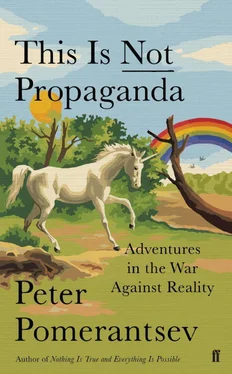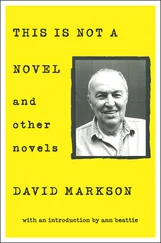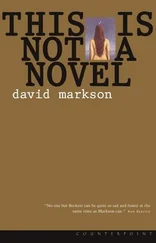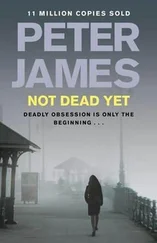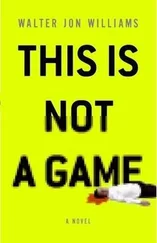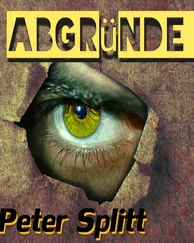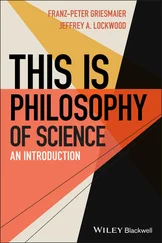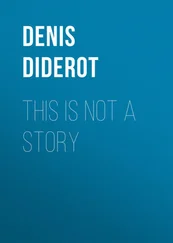When Russian nationalists and Soviet nostalgists would gather at the Bronze Soldier to sing Soviet songs and drape the statue with flags, Estonian right-nationalists began to organise counter-marches at the same spot. In 2006 one Estonian writer threatened to blow the statue up. In March 2007 the Estonian parliament voted to move the statue to a military cemetery – officially, for reasons of keeping the peace. But Russian politicians and media responded furiously. ‘Estonian leaders collaborate with fascism!’ said the mayor of Moscow. ‘The situation is despicable,’ said the foreign minister. The Russian media nicknamed the country ‘eSStonia’. A vigilante group calling itself the Night Watch camped around the Bronze Soldier to protect it against removal.
On the night of 26 April, as the statue was about to be removed, ethnic Russian crowds started throwing bricks and bottles at the Estonian police. Riots broke out and there was mass looting. One man died. Russian media reported that he was killed by police (he was not), that Russians had been beaten to death at the ferry port (they had not), that Russians were tortured and fed psychotropic substances during interrogation (they were not).
The next day employees of the Estonian government, newspapers and banks arrived at work to find their computer systems down, crippled by a cyberattack known as ‘denial of service’, whereby so many requests are sent to an Internet address it crashes. e-Stonia had been taken offline. The whole country was paralysed by the combination of propaganda, cyberattacks and street riots. [18]
Who was behind the attack? The Estonian security services claimed to have observed meetings between the Night Watch vigilantes and staff at the Russian embassy. But ascertaining that the unrest had been coordinated by the Kremlin was a different matter. The Russian patriotic youth group, Nashi, took credit for the cyberattack, but claimed they had done it off their own bat; the government had had nothing to do with it. It was ‘patriotic trolling’, but the victim was a whole country.
For Ilves and his national security team the precise aim of the riots was something of a riddle. ‘When Russian politicians make threats about being able to conquer Estonia, does that mean they would actually invade?’ Ilves’s former security adviser Iivi Masso said when I asked her about this. ‘Are they just trying to demoralise us? Or do they want Western journalists to quote them, which will send a signal to the markets that we’re unsafe, and thus send our investment climate plummeting? Sometimes we wonder whether the point of the attacks is only to make us sound paranoid and unreliable to our allies.’
What the attacks definitely signalled was that despite entry into NATO, Estonia could not just walk away from its former colonial master. The NATO alliance is predicated on a single phrase, contained in Article 5 of the treaty, which holds that a military attack on one member is an attack on all. For all the invocations of the idea of ‘the West’, its practical, geopolitical expression is Article 5 – a sentence, a promise. But what if that sentence was rendered meaningless? Russia could not risk a military war with NATO, but what if its attack was non-military and non-attributable?
After he completed his two terms as president of Estonia in 2016, Ilves moved to Palo Alto, California, where he was given a fellowship at Stanford University. Dressed, as ever, in his tweeds and bow tie he padded around in between the begonias, visiting the technology companies with their trays of jelly beans, where everyone wore trainers and rode around the brightly painted corridors on bicycles. These precocious computer-science geniuses didn’t understand the first thing about politics or history, or their role in either of them.
In Estonia Ilves had made the idea of the Internet synonymous with post-Soviet progress. Now that he was among the social media companies he was disenchanted: they were empowering the very forces he had tried to free Estonia from, but didn’t seem willing to recognise their responsibility. He wrote an essay for the Facebook Newsroom about how it could be exploited by undemocratic powers, but they took so long to publish it that by the time it came out, events had taken over: social media companies were being forced to investigate and reveal how the Kremlin used fake online accounts to covertly try and influence the US presidential election to help Donald Trump and fuel ethnic hatreds and social divides. Ilves rolled his eyes when he saw how the political and media classes in the US reacted as if nothing like it had ever been seen before: a ‘digital 9/11’, some called it, ‘an online Pearl Harbor’. How narcissistic, thought Ilves; the attacks on the US were mild compared to what had happened to Estonia a decade earlier.
After the 2016 elections, academics and experts debated how to measure the effect of the Kremlin’s information operations in the US. There were at least two separate ones to consider. One was the hack and subsequent leak of emails of senior staff in the Democratic Party, which one could argue were influential as they became a major talking point in the election. The troll farm activities were much harder to make sense of. They were tiny compared to the overt and covert online political campaigning in the US. So should one ignore the effects of such a relatively small foreign campaign and focus on the impact of the larger, US-produced mass? Or should one focus on the foreign operation, as that could have tipped the scales in a tight race?
Or, I wondered, could one think about the impact of the Russian campaigns in another way: as eating away at a greater story and a set of associations between events and images that had defined ‘democratisation’?
Estonia had been one of the places where the great non-violent protests that helped bring down the Soviet Union began. The Singing Revolution had started with ordinary people belting out patriotic songs in the main square of Tallinn in 1987, and culminated in 1991 with singing protesters facing down Soviet tanks. It was a constant reference point for advocates of non-violent revolutions, such as Srdja Popović. Now the Kremlin was working away at undermining the association between people demonstrating out in the streets in Eastern Europe and the greater story of waves of democratisation flowing in a single historical direction. When authoritarians create their own versions of protests, the effect is almost satirical, taunting and undermining the originals. Two could play at people protests, Moscow seemed to be saying.
In America one of the tricks of the St Petersburg troll farm was to take on the personas of American civil liberties campaigns – Black Lives Matter, for instance – and then use them to raise the vote for the more pro-Russian presidential candidate, Donald Trump, or depress it for his rivals. The troll farm even organised protests in US cities, both for and against Trump, each chanting against the other. One protest in particular reminded me of a really crap copy of Srdja’s political street theatre: when a troll posing as a Donald Trump supporter in a fake Facebook group called Being Patriotic convinced a woman in Florida to hire an actor to wear a rubber Hillary Clinton mask and then lock the actor in a makeshift jail cell and wheel them about as if in a carnival procession. [19]
And it’s when the Kremlin’s efforts are unveiled that they have perhaps their most significant effect. When one hears so many stories of fake accounts that seem to be supporting freedoms and civil rights, but which in fact turn out to be nothing of the sort, one starts doing a double take at everything one encounters online. Is that American civil rights poster over there actually being run out of St Petersburg? Is anything what it says? When the Kremlin crawls inside American protest movements online, the very notion of genuine protest starts to be eroded. Getting caught is half the point, making it easier for the Kremlin to argue that all protests everywhere are just covert foreign influence operations. After all, don’t the Srdjas of this world get money from the democracy assistance complex? This reinforces the larger narrative the Russian (and Iranian and Chinese) media are trying to reinforce: that colour revolutions and the Arab Spring are not genuine but rather American-engineered ‘regime changes’. Indeed, that there is actually no such thing as truly bottom-up, people-powered protest, a message that is only reinforced when the American government gets caught trying to use social media to covertly stir up anti-government sentiment abroad, as it has in Cuba. [20]
Читать дальше
